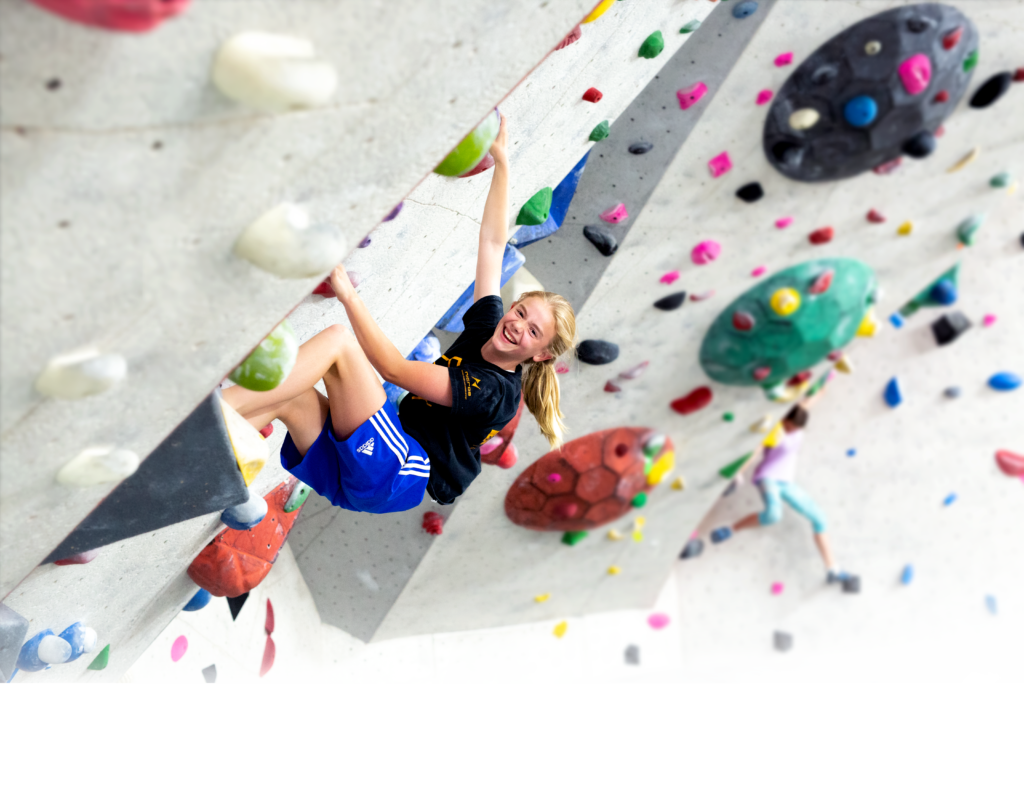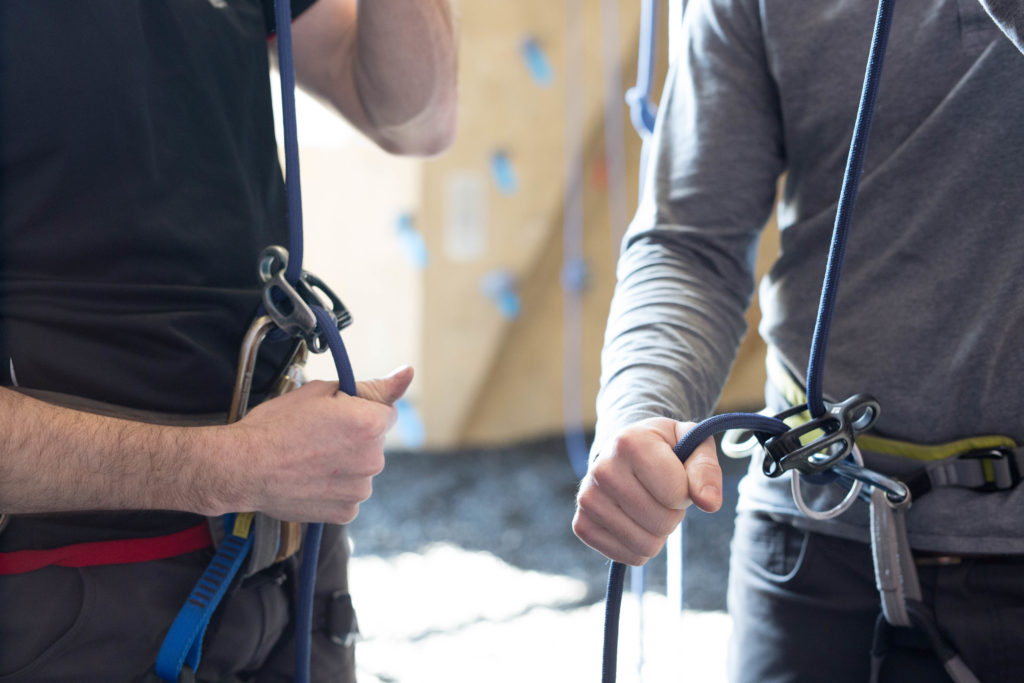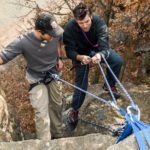Climbing Terminology: A Primer
Climbing is an exciting and challenging sport that requires skill, strength, and endurance. Whether you are a beginner or an experienced climber, understanding the terminology associated with climbing is essential. We will explore some of the most common climbing terms to help you communicate more effectively with other climbers and enhance your overall climbing experience.

1. Bouldering
Bouldering is the most straight forward and most accessible, form of climbing. It is named after the practice of climbing on large boulders. Typically done close to the ground, crash pads and spotting are used as protection for the consequences of ground impact instead of belay ropes. No ropes are used. So, every time a climber falls or lets go, they will impact the ground. It is all about technical, difficult moves on short routes or problems—generally no higher than 10 to 15 feet above the ground. While roped climbing has more of a focus on endurance, bouldering is all about power, finesse, and technique. It started as a way to train for roped climbing and has now evolved into a sport of its own.
2. Top rope climbing
Top roping is a style of climbing in which the rope is anchored to the top of the climb and the climber is attached to the rope via a harness and a belay device. When climbing with a partner, the climber is tied to one end of the rope and the belayer holds the other side of the rope. The climber follows the rope up to the top rope anchor and the belayer takes up the slack and holds the climber with the help of the belay device in case of a fall. The belayer must diligently take up slack in the rope as the climber ascends the route, reducing the threat of falling greater distances or to the ground. When the climber reaches the top of the route, the belayer can lower them slowly.
3. Lead climbing
Lead climbing is a more advanced style of climbing in which the climber takes or “leads” the rope up as they climb. It is different from top rope climbing in that the rope is not redirected through an anchor at the top and before it is attached to the climber. With lead climbing, the climber is going to tie in on the ground, the rope hangs below them as they climb, and they clip into anchors or quick draws that are placed or already in place on the wall as they ascend. A belayer lets out slack as their partner climbs, takes in slack once they clip into an anchor, and holds them if they sit back and put their weight on the rope or fall. Lead climbing requires more skill and experience than top roping and is often used for more challenging climbs.
4. Belay
Belaying is a critical aspect of climbing that involves using a rope and a belay device. The person who is responsible for belaying is called the belayer and the device utilizes friction to assist them in catching or holding a falling or resting climber. The belay device is connected to the belayer’s harness with a locking carabiner. When the rope is appropriately ”locked” into the belay device, then the climber is “on belay” and can begin to climb. The belayer applies tension to the rope whenever the climber is not moving and removes the tension or slack from the rope whenever the climber needs more rope to continue climbing. An individual should receive instruction and supervision from an experienced climber or trained instructor before belaying.
5. Auto-belay
Auto-belay devices allow climbers to climb without the help of a belay partner. They prevent slack in the climbing rope or line by automatically and mechanically taking it up as the climber ascends. When the climber reaches the top, or falls, the auto-belay immediately arrests the fall and lowers the climber to the ground in a controlled manner. These devices usually hang on or are attached to an artificial climbing wall. There are several different types of auto-belay devices, including those that operate by hydraulics, magnetic braking technology, centrifugal force, and/or friction.

6. Harness
A climbing harness is an essential piece of climbing equipment that wraps around the waist and thighs and is used to attach the climber and belayer to the rope. Commercially produced harnesses specific to climbing meet industry guidelines and manufacturing standards that help ensure the quality, durability, and safety aspects necessary for climbing. Generally, they are made of strong nylon webbing that typically has padding at crucial pressure points such as around the waist and thighs. They will have reinforced attachment points for the rope, and most will have a belay loop where the belay device is attached to the harness with a locking carabiner. There are various types of harnesses with different features, be sure to get expert instruction and follow the manufacturer’s directions when using any climbing gear.
7. Carabiner
A carabiner is a metal loop with a spring-loaded gate or closure that is used to connect various pieces of climbing equipment. Carabiners come in different shapes and sizes and are made from different materials such as aluminum, steel, or titanium. A locking carabiner’s gate can either screw or snap shut so the gate is “locked”closed for safety purposes.
8. Climbing shoes
Climbing shoes are specialized footwear designed to provide maximum grip and support while climbing. Typically, climbing shoes have a tight fit, little (if any) padding, conform closely to the wearer’s feet, and have a smooth, sticky rubber sole with an extended rubber “rand” (an edge that extends over the toe, heal, and sides of the shoe). The tightness supports the foot and allows the climber to use small footholds effectively. Most climbers do not wear socks in order to achieve a more precise fit and feel. As a result of the tight fit, climbing shoes are generally uncomfortable to walk in, therefore, climbers wear other shoes to approach climbing areas or walk around the indoor climbing facility.
9. Chalk
Climbing chalk is primarily made of magnesium carbonate (MgCO3) and helps reduce moisture on a climber’s sweaty hands and improves the friction between skin and the surface. Chalk can basically be broken down into three subcategories – block chalk, powder chalk, and liquid chalk. Block chalk is, as the name indicates, sold in solid rectangular blocks. It is the same as powdered climbing chalk but has not been crushed and filtered into a powder. Therefore, it is most often more economical than other types of chalk. You must break down the chalk yourself before using it. Powder chalk comes in varying degrees of consistency from a super fine chalk to chunky “pebble” sized pieces. Often, it comes in a super fine mesh cloth bag that climbers carry in their chalk bag that climbers reach in and squeeze. Liquid chalk is simply a combination of regular chalk and a type of alcohol, forming a liquid that you apply to your hands. The alcohol evaporates leaving an even layer of chalk coating on your hands.
10. Route
A climbing route is a pre-determined path up a climbing wall or rock face. Indoor climbing facilities often mark climbing routes or “problems” (as they are called in bouldering) with the same colored handholds or tape and are graded based on their difficulty.
Climbing is dangerous, it involves inherent and other risks and cannot be eliminated. The information presented here does not describe all of the risks associated with climbing and is not intended to replace or supersede expert instruction and training.
© 2023 Vertical Endeavors, Inc. All rights reserved. The contents of this article, photographs, and graphical representations are protected by U.S. and International copyright laws. Reproduction and distribution, in part or whole, without written permission from Vertical Endeavors are prohibited.

